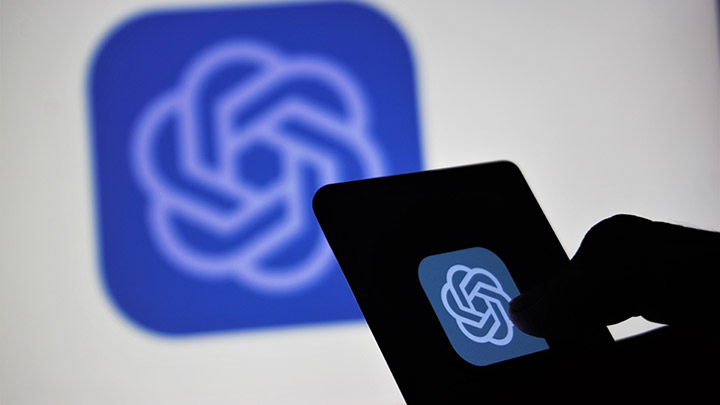In today’s digital workplace, employees can access more tools, apps, and devices than ever. While this technology empowers workers and boosts productivity, it poses major risks without proper IT oversight. This unauthorized or “shadow” IT is becoming increasingly common across organizations of all sizes.
Shadow IT refers to any hardware, software, application, or service used for business purposes without formal approval from the IT department. For example, employees may utilize unauthorized cloud storage, collaboration platforms, or mobile apps not managed or secured by the company’s IT policies. According to recent surveys, over 80% of companies have some form of shadow IT.
The risks of shadow IT stem from the lack of visibility and control for IT and security teams. Unmanaged devices and apps can expose confidential data, lead to regulatory non-compliance, and provide entry points for cyberattacks. Since shadow IT circumvents IT governance, these unsafe technologies often go undetected, leaving organizations vulnerable.
For small business owners, addressing shadow IT is crucial for protecting against growing cyber threats. Companies can identify rogue apps and devices by working with managed IT and security providers, enforce security policies, and prevent unauthorized access to sensitive business data. Organizations can embrace flexible and collaborative technologies with an expert partner while prioritizing cybersecurity.
What Exactly is Shadow IT?
Shadow IT refers to any hardware, software, application, or service used in an organization without the formal approval of the IT department. It’s the technology that essentially operates “in the shadows” outside of official policies and procedures. While shadow IT gives employees more flexibility, it also poses huge risks from a security and compliance perspective.
Some common examples of shadow IT include:
- Unauthorized cloud storage or file-sharing services like Dropbox or Google Drive
- Collaboration platforms like Slack or Asana that were not approved
- Consumer messaging apps used for work, like WhatsApp or Snapchat
- Smartphones, tablets, and laptops brought from home
- USB drives, smartwatches, and other wearables
- Productivity software or apps downloaded without permission
Shadow IT emerges for a few key reasons:
- Employees often need help finding the officially approved tools. They adopt consumer-grade apps that are easier and more user-friendly.
- Workers look for ways to improve efficiency and collaboration. Unapproved apps let them access documents and communicate faster.
- Younger and more tech-savvy staff tend to circumvent IT policies. They are used to the flexibility of the consumer space.
- The rise of bring-your-own-device (BYOD) programs makes personal tech in the workplace familiar.
While shadow IT provides more options for employees, it also carries significant risks:
- IT and security teams lose visibility and control over company data.
- Sensitive information could be exposed if rogue apps have security holes.
- It leads to non-compliance with regulations like HIPAA or PCI DSS.
- Unauthorized access and data breaches become more likely.
- There needs to be controls or oversight for how data is managed or shared.
The key is finding a balance – providing flexible staff tools while maintaining strong IT governance and cybersecurity. That’s where working with expert IT/security providers becomes critical for small businesses today.
The Main Risks of Shadow IT
Shadow IT is an easy fix for workers who want more efficient tools and apps. However, bypassing IT oversight creates substantial cybersecurity risks that leave companies vulnerable. Here are some of the top dangers that unauthorized technologies pose:
- Data breaches – Consumer-grade apps often lack enterprise-level security, making it easy for hackers to steal information through phishing attacks or exploits. With shadow IT, there are no safety guards in place.
- Malware infections – Downloading unsanctioned software frequently exposes businesses to malware lurking on the internet. Once infected, malware can destroy systems, steal data, and spread across networks.
- Compliance violations – Many industries like healthcare and finance have strict data security and privacy regulations. Using unauthorized apps that don’t comply can result in fines and lawsuits.
- Loss of control over company data – IT teams need more visibility into how data is managed, secured, or accessed when employees use shadow IT. This makes it impossible to control sensitive information.
- Difficulty securing devices and networks – When staff bring unapproved devices onto the network, it becomes much harder for IT to enforce security protocols and permissions. Networks can be compromised.
- Financial losses – Unsanctioned apps lead to wasted spend on unused approved tools. Breaches and compliance fines due to shadow IT also inflict heavy financial damage.
- Intellectual property theft – With company data flowing freely across unauthorized apps, intellectual property, and trade secrets are at risk of theft. This causes a loss of competitive advantage.
- Reputational harm – If shadow IT enables breaches of customer data, companies face backlash, loss of trust, and damage to their brand reputation.
For small businesses, a breach or cyberattack enabled by shadow IT can be catastrophic. To stay secure against escalating online threats, partnering with reputable managed IT and security providers is crucial. They can identify shadow IT risks, enforce cybersecurity best practices, and prevent unauthorized access across devices and networks. With rigorous IT governance, small businesses can embrace flexible technology without sacrificing safety.

Real-World Examples of Shadow IT Risks
Shadow IT might seem harmless, but has enabled many high-profile data breaches and compliance failures. One survey shows over 80% of companies have experienced a security incident due to unapproved apps and devices.
In 2017, an AWS server used for shadow IT by Tesla employees was unprotected, exposing sensitive employee information online. In the Sony Pictures breach in 2014, hackers gained entry through an unsecured cloud app used outside of IT policies.
Healthcare and financial services see frequent issues. An employee at Medicaid contractor Centene exposed 12,000 patient records by storing data on a personal, unsecured Google Drive account. The investment firm Morgan Stanley saw 16,000 client records compromised through an unsanctioned third-party app.
Breach costs can be astronomical. Columbia Sportswear faced a $10 million class action lawsuit after an auditor used an unauthorized Dropbox account containing private employee data.
For small businesses, a single shadow IT-related incident can be devastating. A breach destroys customer trust, incurs major legal and technical costs, and causes irreparable reputational damage. Partnering with IT/security experts is the best path to avoid added risk from shadow IT.
How to Regain Control Over Shadow IT
Companies must take a strategic approach that balances security, compliance, and employee flexibility to get shadow IT under control. Here are some best practices:
- Implement IT governance frameworks establishing formal policies, controls, and oversight processes for managing technologies and company data. This helps align IT with business goals while reducing risk.
- Deploy enterprise mobility management (EMM) solutions to secure and monitor any devices accessing corporate networks and information. EMM can enforce permissions, passwords, encryption, and more.
- Perform regular audits and monitoring to identify shadow IT systems already in use. IT teams should use tools to scan network traffic and devices.
- Establish an IT-approved app catalog so employees know what third-party apps are acceptable. This catalog should include secure SaaS apps that improve productivity.
- Educate employees on technology policies and the risks of using unauthorized apps through training and awareness campaigns. Clear guidelines will reduce shadow IT.
- Foster collaboration between IT and employees so workers’ needs are met through approved apps. An open dialogue prevents the need for shadow IT.
- Review acceptable use policies and update them to cover cloud services, devices, and applications. Strictly enforce these policies.
- Incentivize using approved apps by ensuring they are user-friendly and add value for employees. This reduces the temptation to use shadow IT.
For small businesses, partnering with managed IT service providers is key to regaining control over shadow IT in today’s complex tech landscape. With their guidance, organizations can securely embrace flexible solutions that won’t put their data at risk.
The Benefits of Working with a Managed IT/Security Provider
For small businesses, partnering with managed IT and cybersecurity providers offers many advantages, including:
- Improved security – Managed providers monitor networks 24/7, use advanced tools to identify threats, and rapidly respond to attacks. This level of vigilance would only be possible for small business IT staff.
- Access to expertise – Providers have highly trained IT professionals up-to-date on the latest security tactics. Small business staff often need to gain these specialized skills.
- Cost savings – Businesses avoid the high costs of hiring expert in-house security staff. Providers offer economies of scale.
- Focus on core business – With providers handling IT/security, and companies can dedicate more time to growing their business and serving customers.
- Regulatory compliance – Providers ensure systems and data meet security rules for healthcare, finance, retail, etc. This avoids fines.
- Latest technology – Providers supply and manage sophisticated security hardware and software that small businesses could not afford alone.
- Risk mitigation – Providers perform risk assessments, identify vulnerabilities, and implement controls to reduce cyber risk exposure.
For resource-constrained small businesses, partnering with managed IT and cybersecurity services is the most effective way to implement robust protections while focusing limited resources on core business goals.

Key Takeaways
- Shadow IT refers to unauthorized apps, devices, and services organizations use without IT approval. It’s a growing problem that heightens data breach and cyberattack risks.
- Common examples of shadow IT include cloud storage, collaboration platforms, messaging apps, and employee-owned devices used for work.
- Shadow IT emerges due to inadequate approved tools and employee desire for greater efficiency. However, it bypasses security controls.
- Risks include data breaches, malware infections, loss of data control, regulatory non-compliance, and reputational damage.
- Organizations need IT governance frameworks, auditing, and enterprise mobility management to get shadow IT under control.
- Educating staff on technology policies is crucial. Collaboration between IT and employees prevents shadow IT.
- Partnering with managed IT/security providers offers expertise and technology for resource-constrained small businesses to secure shadow IT.
Addressing shadow IT is vital for small business cybersecurity. With rigorous IT oversight and strategic providers, companies can embrace flexible technology safely.
Protect Your Small Business from Shadow IT Risks
At ZZ Servers, we know that shadow IT poses serious cybersecurity risks for small businesses in Virginia. Our team of IT and cybersecurity experts has over 17 years of experience securing organizations just like yours.
To protect your business from data breaches, malware, and compliance violations due to shadow IT, trust the professionals at ZZ Servers. We provide:
- IT governance frameworks to control shadow IT
- Enterprise mobility management solutions
- Ongoing network monitoring and auditing
- Employee security training programs
- The latest cybersecurity software and hardware
Don’t let shadow IT put your business at risk. Contact ZZ Servers today at 800-796-3574 for a free consultation with our IT and cybersecurity specialists. Let us keep your company safe.
Frequently Asked Questions
What are some examples of shadow IT?
Some common examples of shadow IT include using unauthorized cloud storage services like Dropbox, downloading unapproved collaboration apps like Slack, and bringing personal devices like smartphones and laptops to use for work purposes without IT approval. Any hardware, software, or application used at work without going through IT channels is considered shadow IT.
Why do employees use shadow IT?
Employees often use shadow IT because the officially approved IT systems are inadequate or difficult to use. Shadow IT gives them more consumer-friendly apps and tools that allow them to be more productive, collaborative, and efficient. They may want more user-friendly technology.
What risks does shadow IT create?
The risks of shadow IT include data breaches, malware infections, regulatory non-compliance, loss of control over company data, and reputational damage. Without oversight from IT and security teams, shadow IT circumvents necessary safety controls and exposes confidential data.
How can businesses control shadow IT?
To control shadow IT, businesses need IT governance frameworks, auditing of devices/networks, enterprise mobility management solutions, security training for staff, and collaboration between IT teams and employees. Strict, acceptable use policies for technology are also important.
Why should businesses work with a managed IT/security provider?
Working with a managed IT/security provider gives small businesses access to expertise, advanced technology, and round-the-clock monitoring needed to secure networks against shadow IT risks. Providers offer services and tools that small business IT staff often need to improve.


